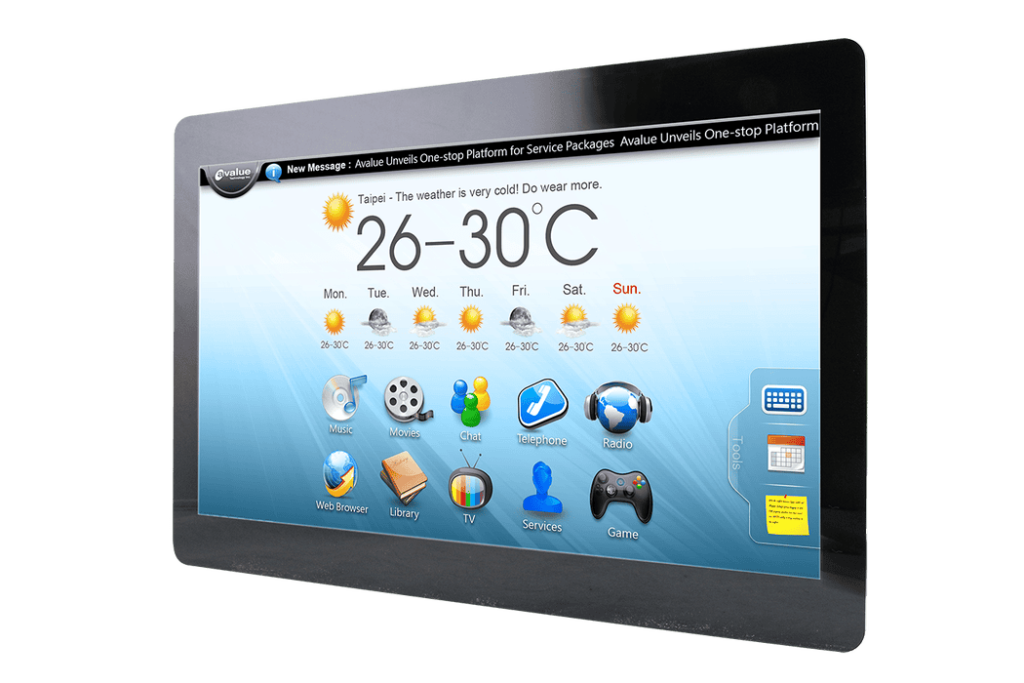+44 (0)1634 791600
info@crystal-display.com
Newsletter Sign Up!
+44 (0)1634 791600
info@crystal-display.com


Active-Matrix Organic Light-Emitting Diode (AMOLED) technology has become a leading display solution across a wide range of devices—including smartphones, smartwatches, televisions, and industrial human-machine interfaces (HMIs). It combines the light-emitting advantages of OLEDs with the precision control offered by an active matrix of thin-film transistors (TFTs), delivering superior image quality, energy efficiency, and design flexibility compared to traditional display technologies like TFT LCDs.
Combination of OLED and Active Matrix
At the heart of AMOLED is OLED (Organic Light-Emitting Diode) technology, which uses organic compounds that emit light in response to an electric current. Unlike passive OLED technologies, AMOLED incorporates an active matrix—a grid of TFTs that allows individual control of each pixel. This active control results in quicker response times, smoother video playback, and highly detailed imagery.
Self-Emissive Display
AMOLED is a self-emissive technology, meaning each pixel produces its own light. This eliminates the need for a separate backlight, which is required in LCD (Liquid Crystal Display) technologies. The absence of a backlight allows AMOLED panels to be thinner, lighter, and more energy efficient.
Each pixel in an AMOLED display is controlled by a small circuit made up of TFTs and capacitors. These components regulate the amount of current that flows through the organic layers to emit the desired brightness and colour. The active-matrix structure ensures that each pixel is refreshed individually, offering superior responsiveness and display uniformity.
This precise control over pixels leads to:
AMOLED panels are particularly power-efficient because they only consume electricity when pixels are active. Dark areas of an image consume no power as the relevant pixels are completely off. This contrasts with LCDs, where the backlight is always on—either fully or partially, depending on local dimming (e.g., in FALD – Full Array Local Dimming LCDs). The energy savings are especially valuable in battery-powered devices like smartphones and wearables.
Thanks to its ability to turn individual pixels on and off, AMOLED can produce true blacks and theoretically infinite contrast ratios. The technology supports a broad colour gamut and high dynamic range (HDR), delivering rich, saturated colours and subtle gradations, which are ideal for both entertainment and professional visual applications.
Because AMOLED displays do not require a backlight or thick substrates, they can be fabricated on flexible materials. This flexibility has enabled innovative device designs such as:
AMOLED displays maintain consistent brightness and colour fidelity across wide viewing angles, unlike traditional LCDs which can suffer from colour and contrast shifts when viewed from the side.
One of the longstanding issues with AMOLED is burn-in, a form of permanent image retention that occurs when static elements (e.g., app icons or navigation bars) remain on screen for extended periods. Over time, these static images can leave ghostly afterimages due to uneven degradation of the organic materials, especially the blue subpixels which degrade fastest.
Image retention, a temporary version of this phenomenon, can often be reversed by varying the display content. However, persistent image retention can evolve into permanent burn-in.
The organic compounds used in AMOLED degrade over time, reducing brightness and colour accuracy. Blue emitters are particularly susceptible, limiting the overall lifespan of the display. While red and green OLED materials have improved substantially, blue remains a bottleneck for long-term performance.
A major development has been the introduction of PHOLEDs, which use phosphorescent materials to improve internal quantum efficiency up to nearly 100%. Compared to traditional fluorescent OLEDs, PHOLEDs require less power and offer a longer lifespan. Currently, PHOLEDs are widely used for red and green subpixels, and the commercial deployment of blue PHOLEDs—expected sometime in 2025—is anticipated to resolve one of the last efficiency challenges in AMOLED technology.
Tandem OLEDs stack multiple light-emitting layers on top of each other, effectively increasing brightness, improving power efficiency, and extending operational life. These are particularly promising for high-end displays, such as professional monitors, automotive dashboards, and ultra-high-definition televisions.
QD-OLEDs combine a blue OLED light source with quantum dot materials that convert blue light into red and green. This hybrid approach improves colour accuracy, brightness, and energy efficiency. QD-OLEDs use a similar active matrix of TFTs and are expected to bridge the gap between traditional OLEDs and emerging technologies like micro-LED.
The AMOLED industry is advancing rapidly, driven by both consumer demand and industrial needs. Several next-generation innovations are being explored:
Summary
AMOLED represents a highly advanced display technology that brings together high contrast, vivid colour reproduction, mechanical flexibility, and excellent power efficiency. While challenges such as material degradation and image burn-in persist, ongoing research and development are rapidly addressing these limitations. With innovations like PHOLEDs, tandem layers, and quantum dots, AMOLED is poised to remain a dominant display solution across both consumer electronics and industrial sectors for years to come.